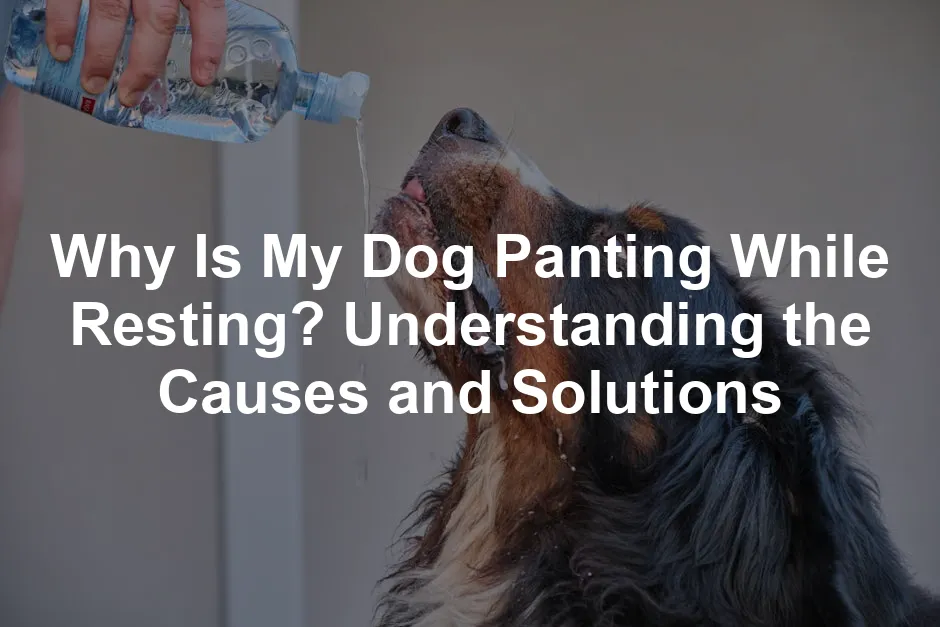
Why Is My Dog Panting While Resting? Understanding the Causes and Solutions
Introduction
Panting is a common behavior in dogs, but it can be concerning. Many pet owners worry when their furry friend pants while resting. Understanding why this happens is crucial for your dog’s well-being. Let’s explore the reasons behind this behavior and when it might be a sign of trouble.
Summary and Overview
Dogs pant for various reasons, and it’s essential to understand the physiological aspects. Primarily, panting helps dogs regulate their body temperature. Unlike humans, dogs don’t sweat. They rely on panting to cool down. A healthy dog typically breathes between 15 to 35 times per minute at rest. If your dog exceeds 40 breaths per minute while resting, it may indicate an issue.
Excessive panting can signal underlying health problems. Conditions such as heart disease, respiratory issues, or pain can cause your dog to breathe heavily, even when relaxed. In the following sections, we’ll discuss specific causes, symptoms to watch for, diagnostic methods, and treatment options. Understanding these factors will help you determine if your dog’s panting is normal or requires veterinary attention.
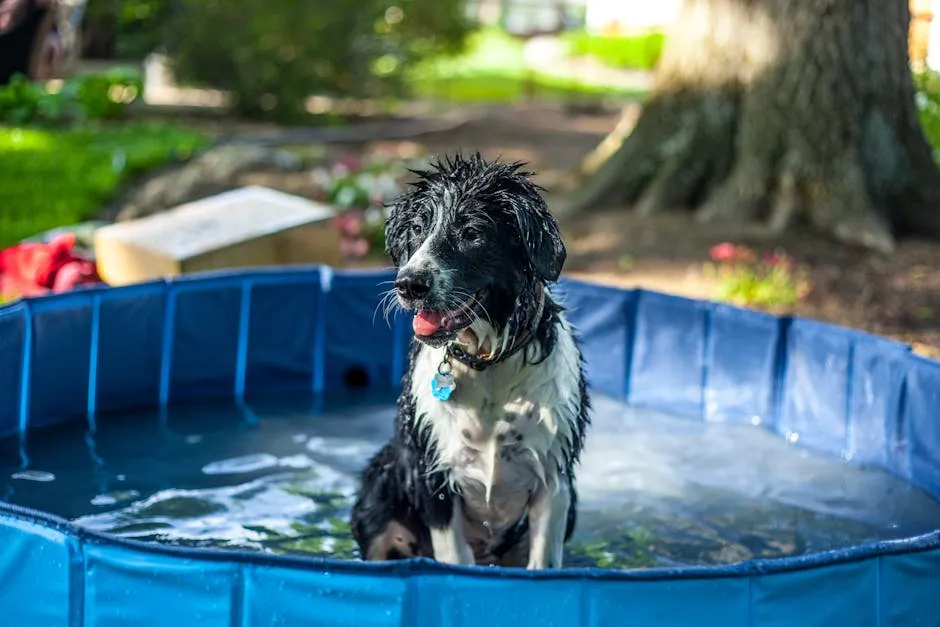
And speaking of keeping your dog cool, consider investing in a Dog Cooling Mat. It’s perfect for those hot summer days when your pooch just can’t seem to beat the heat!
Causes of Panting While Resting
Understanding Normal Panting
Panting is a natural behavior in dogs. It’s their way of cooling down. Since dogs can’t sweat like humans, panting helps them regulate body temperature. When a dog pants, air circulates in and out of their body, allowing heat to escape.
You might see your dog pant after playtime or exercise. It’s normal for them to breathe faster then. However, if your dog pants while resting or sleeping, it could be a signal of something more serious. Understanding when panting is normal versus when it’s concerning is key to keeping your dog healthy.
Health Issues Leading to Excessive Panting
Excessive panting while resting can point to various health issues. If your dog is panting heavily, it’s essential to investigate further.
Respiratory Issues: Conditions like asthma, pneumonia, or laryngeal paralysis can lead to breathing difficulties. Asthma causes inflammation in the airways, making it hard for your dog to breathe. Pneumonia, an infection in the lungs, can also cause distress and panting. Laryngeal paralysis occurs when the muscles in the larynx weaken, leading to noisy breathing and increased panting.
Heart Problems: Dogs with heart disease often show signs of respiratory distress. Conditions like congestive heart failure can hinder their ability to breathe normally, leading to panting. A dog may pant heavily after small amounts of exercise, which could indicate an underlying heart issue.
Pain and Discomfort: If your dog is in pain, such as from an injury or arthritis, they may pant as a response. Pain can cause anxiety, leading to elevated breathing rates. It’s crucial to observe your dog for signs of discomfort, as addressing the pain can help reduce the panting.
Recognizing these health issues early can make a significant difference in your dog’s well-being. If you notice excessive panting, consult your veterinarian to rule out serious conditions.
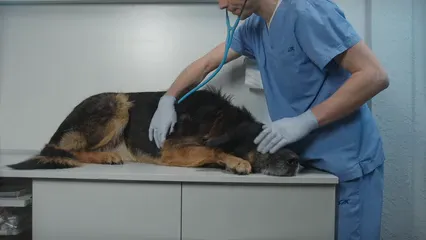
And while you’re at it, why not keep your dog’s first aid needs covered with a Dog First Aid Kit? You never know when your playful pup might need a band-aid or two!
Environmental Factors
High temperatures and humidity can make your dog pant excessively. Dogs don’t sweat like we do; they rely on panting to cool off. When it’s hot, their bodies work harder to regulate temperature. If your dog is panting while resting, consider the weather. Is it particularly warm or muggy?
Stress or anxiety can also affect your dog’s breathing patterns. Stressful situations, such as loud noises or changes in their environment, may lead to rapid panting. You might notice your dog pacing or appearing restless during these times. Identifying and minimizing stressors can help your dog feel more at ease and reduce their panting habits.
Medication Effects
Certain medications can trigger increased panting in dogs. For instance, corticosteroids like prednisone can cause this side effect. If your dog begins panting after starting a new medication, it’s essential to monitor them closely.
Always keep an eye on how your dog reacts to any new treatment. If you notice excessive panting, consult your veterinarian. They can help determine if the medication is the culprit and discuss alternative options. Being proactive about your dog’s response to medication ensures their comfort and health.
Signs of Excessive Panting
Differentiating Normal from Excessive Panting
Understanding what constitutes excessive panting is crucial for your dog’s health. A resting dog typically breathes between 15 and 35 breaths per minute. If your dog is panting more than 40 breaths per minute while at rest, it’s time to be concerned.
Look for other symptoms that may indicate a need for veterinary attention. Signs such as lethargy, refusal to eat or drink, or unusual drooling can accompany excessive panting. If you observe these symptoms, don’t hesitate to reach out to your vet for guidance. Prompt action can help ensure your dog’s well-being.

When to Seek Veterinary Care
Excessive panting in dogs can indicate serious health issues. It’s crucial to recognize signs that require immediate attention from a veterinarian. If you notice your dog has blue-tinged gums, this is a major red flag and could signal oxygen deprivation.
Additionally, if your dog shows a reluctance to eat or drink, or appears unusually lethargic, these behaviors could indicate distress. Labored breathing, where your dog is visibly struggling to breathe, is another concerning sign.
If you observe any of these symptoms, don’t wait. Prompt action can make all the difference in your dog’s health. Always trust your instincts—if something feels off, it’s best to consult your vet right away. Your furry friend depends on you for their well-being.
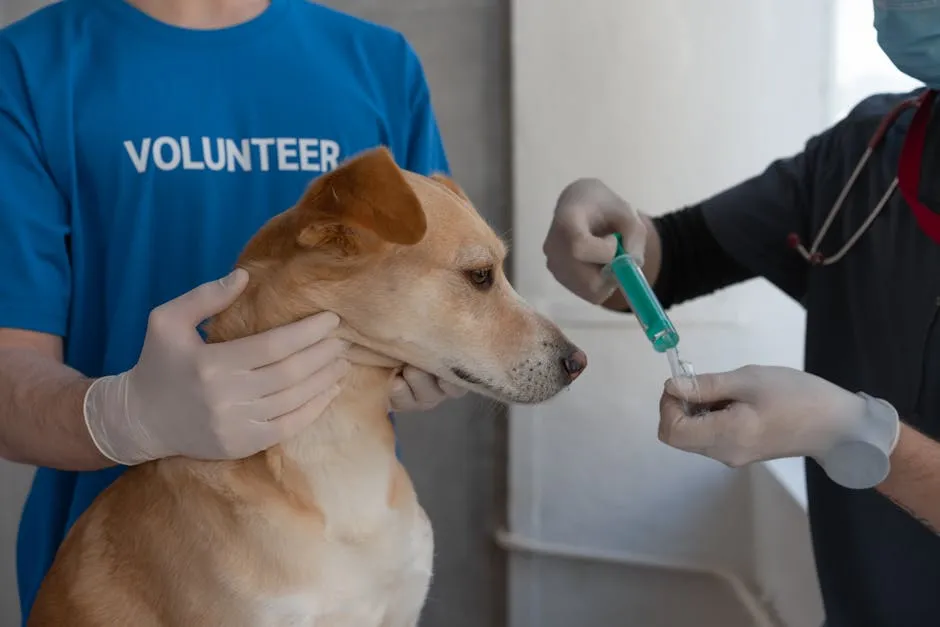
And just to be extra prepared, how about picking up a Dog Anxiety Relief Chews? They can be a lifesaver for those stressful vet visits or thunderstorms!
Diagnosing the Cause of Panting
When you bring your dog to the vet for excessive panting, a thorough examination is vital. The vet will start by listening to your dog’s heart and lungs, assessing their overall physical condition. This initial check helps identify any immediate concerns.
Diagnostic tests may follow, depending on what the vet observes. X-rays can reveal issues like lung tumors or fractures, while blood tests help assess overall health. These evaluations guide the vet in pinpointing the cause of your dog’s panting.

Additionally, your vet will consider any previous medical history and may look for signs of anxiety or stress. Understanding these factors ensures a comprehensive approach to your dog’s health.
Treatment Options for Excessive Panting
Treatment for your dog’s excessive panting will depend on the underlying cause. If the vet identifies respiratory issues, medications may be prescribed to help alleviate the symptoms. Pain relief could be necessary for dogs suffering from injuries or conditions like arthritis.
In cases where anxiety is a factor, behavioral training might be recommended. Techniques to manage stress can improve your dog’s comfort and reduce panting episodes.
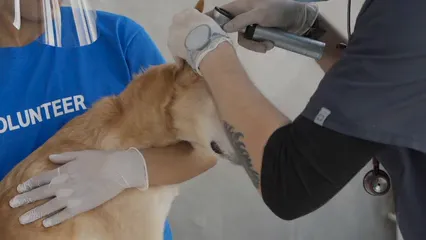
It’s also essential to monitor your dog’s environment. Keeping them cool and calm can significantly help. Your vet will guide you through the best options, ensuring your dog receives the care they need for a healthy and happy life.
Speaking of keeping your dog comfortable, consider a Elevated Dog Bed. It’s perfect for keeping your pup off the hot ground during those scorching summer days!
Home Care and Management
Managing your dog’s panting at home can make a significant difference in their comfort. First, ensure your dog stays cool, especially during hot weather. Provide plenty of shade and access to fresh water. If it’s particularly warm, consider using fans or air conditioning.
Keeping your dog calm is equally important. Identify stressors, such as loud noises or new environments, and try to minimize them. Create a quiet space where your dog can retreat.
Hydration plays a vital role too. Always have clean water available, especially if your dog is panting more than usual. Encourage them to drink, as dehydration can worsen their condition. Regularly check their water bowl to ensure it’s full.
Lastly, comfort matters. Make sure your dog has a cozy spot to rest. A comfortable bed can help reduce stress and promote relaxation. By focusing on these aspects, you can help manage your dog’s panting effectively and keep them happy.

And for those doggy spa days, don’t forget to grab some Dog Shampoo and Conditioner. Keeping your pup clean and fresh is essential for their overall happiness!
Conclusion
Understanding why your dog pants while resting is essential for their health. Regular monitoring can help you identify any changes in their behavior. If you notice excessive panting, don’t hesitate to seek veterinary advice.
Remember, your bond with your dog is built on trust and care. Keeping them healthy ensures they remain your loyal companion for years to come. Always prioritize their well-being and be proactive about their health.
FAQs
Why do dogs pant when resting?
Panting is a natural behavior that helps dogs cool down. It can also indicate excitement, stress, or underlying health issues. If it becomes excessive, consult your vet.
How can I tell if my dog’s panting is excessive?
Count their breaths per minute. If it exceeds 40 breaths at rest, it may be excessive. Look for other signs like lethargy or difficulty breathing.
What should I do if my dog is panting heavily?
Move them to a cooler location and offer water. If panting persists or is accompanied by other concerning symptoms, contact your vet.
Can panting be a sign of anxiety?
Yes, stress or anxiety can lead to increased panting. Identify and remove stressors to help calm your dog. If needed, consult a professional.
When should I take my dog to the vet for panting?
Seek veterinary care if you notice blue-tinged gums, reluctance to eat or drink, or labored breathing. These signs can indicate a serious issue.
Please let us know what you think about our content by leaving a comment down belove!
Thank you for reading till here 🙂
All images from Pexels




